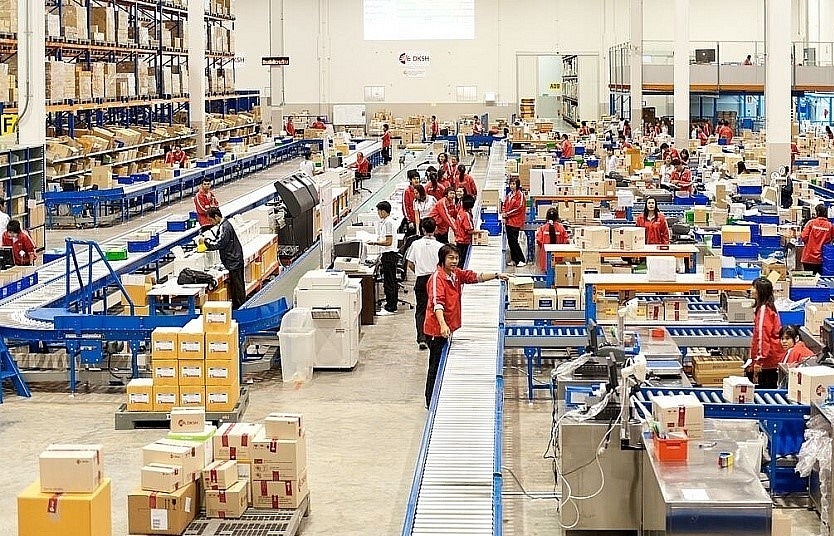Domestic shipping firms strive to weather hardships

illustration photo
“It becomes harder and harder for Vietnam’s ship fleets to achieve dual important targets it is obliged to reach by 2020: transporting 200-292 million tonnes of cargos, representing 9-10 per cent of Vietnam’s total transport volume and hiking import export transport market share to 25-30 per cent,” said Portcoast Consultant Corporation (Portcoast)’s deputy general director Nguyen Manh Ung.
Portcoast, under the Vietnam Maritime Administration (VMA), was assigned to handle the project on revising Vietnam’s sea transport development planning to 2020, with the vision towards 2030. Earlier, the sector’s development planning to 2020 was approved by the prime minister via the Decision 1601/QD-TTg dated October 2009.
According to Portcoast, these dual targets could only be feasible once satisfying these two conditions: Vietnam’s ship fleets were strong enough to win back transport market share from foreign players on international and local routes and local ship fleets run effectively (at least not incurring losses).
In respect to international shipping, at the end of 2012 local fleets consisted of 1,755 ships with the gross tonnage reaching 6.9 million dead-weight-tonnage (DWT) only covered 12 per cent of the market share, mainly operating on short routes (less than 2,000km).
On local routes, particularly regarding container transport the market share of local ship fleets had dropped constantly from 80.1 per cent in 2010 to 61.7 per cent in 2011 and 58.7 per cent in 2012.
“Vietnamese ship fleet’s market share has sunk significantly amid fierce competition from foreign rivals whereas a suitable roadmap and conditions are needed to improve the situation,” said a Portcoast source.
According to Portcoast, local shipping firms, submerged in losses, are not in a position to both embrace restructuring and further invest to raise the ship fleet’s gross tonnage to 8.4-9.6 million DWT by 2015 as regulated at the prime ministerial Decision 1601/QD-TTg.
Chairman of Vietnam Shipowners’ Association Vu Xuan Quynh assumed from now until 2015 shipping firms’ prime target was to restructure their ship fleets to boost operational efficiency.
Accordingly, ships to be sold on liquidation would cover 40 per cent of ships’ total gross tonnage of which Vinalines alone would sell 1.4 million DWT. Critically, even after selling 59 ships Vinalines still incurred VND8.640 trillion ($410 million) in accumulated losses.
Based on shipping market latest forecast and treaties, Portcoast has proposed alleviating the sector’s pressure through scaling down development indexes relevant to Vietnam’s ship fleets’ import export goods’ transport market share to 16.4-17 per cent by 2020 (3.84-4.39 per cent on long-distance routes).
“In the near term, Vietnam’s ship fleets should take advantages of local routes and short-distance international routes with traditional goods, pursuing the target of restructuring the ship fleets, then gradually hiking their operational efficiency in later period,” said Ung.
What the stars mean:
★ Poor ★ ★ Promising ★★★ Good ★★★★ Very good ★★★★★ Exceptional
Latest News
More News
- HSBC raises Vietnam's 2024 GDP growth forecast to 6.5 per cent (July 25, 2024 | 18:50)
- SPX and Frasers Property Vietnam open automated sorting centre in Binh Duong (July 25, 2024 | 18:38)
- Vietnam’s thriving market: a magnet for German investors (July 25, 2024 | 15:26)
- Japan to sponsor over 28 million USD for Can Tho city's smart city project (July 25, 2024 | 10:58)
- Imprints of Party Secretary General Nguyen Phu Trong in Vietnam-US relations (July 24, 2024 | 20:38)
- German textile maker opens thermal insulation factory in Long Thanh (July 24, 2024 | 19:22)
- Infrastructure importance emphasised for growth goals (July 24, 2024 | 17:42)
- UK on way to joining key trans-pacific pact (July 24, 2024 | 17:05)
- Japan designates staff to support companies doing business in Vietnam (July 24, 2024 | 14:20)
- German players leading wave of Euro investments (July 24, 2024 | 14:00)


















 Mobile Version
Mobile Version